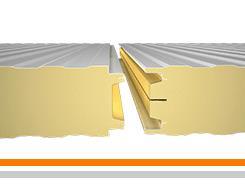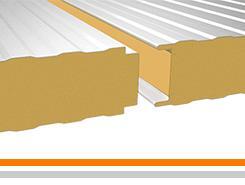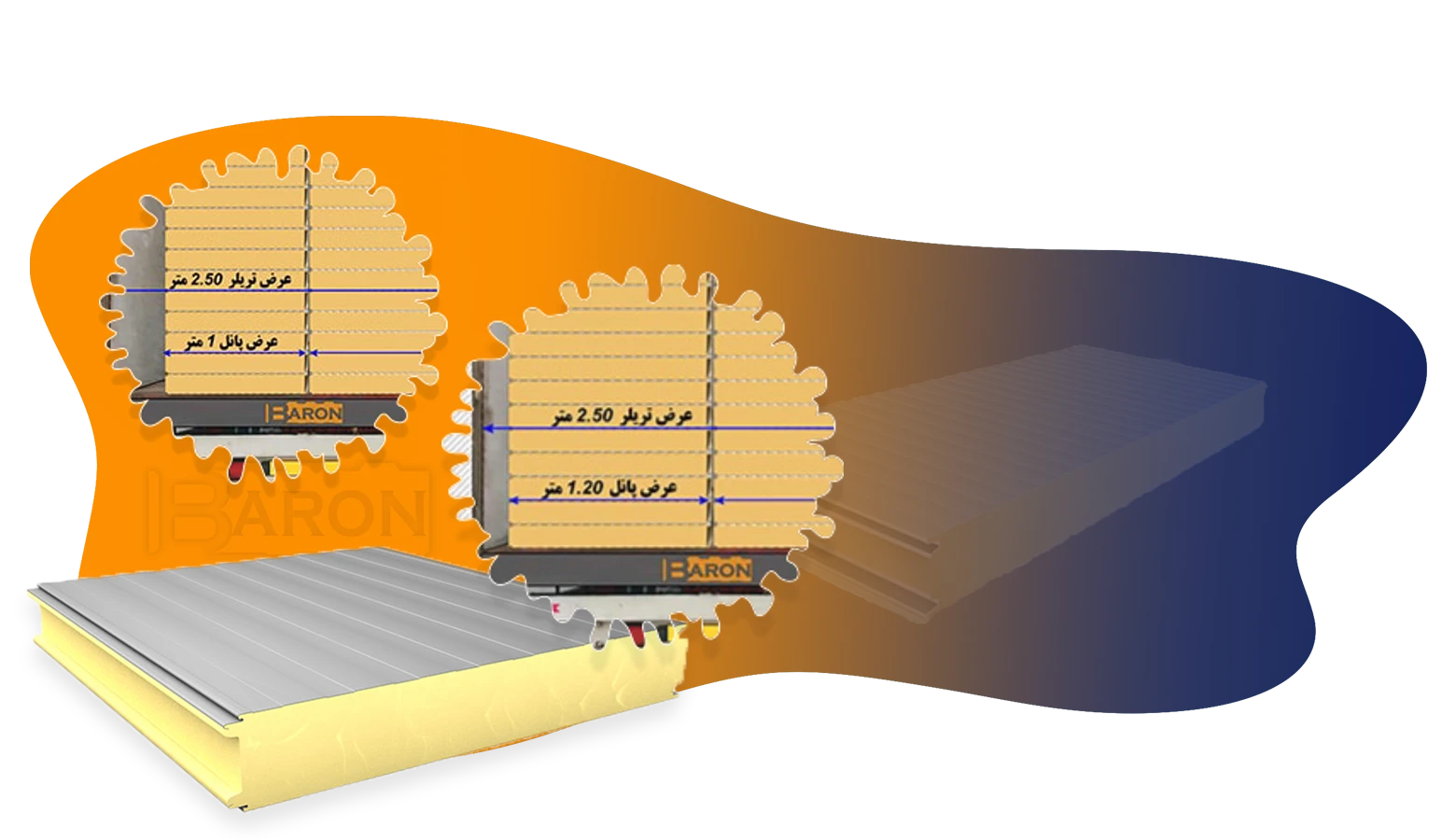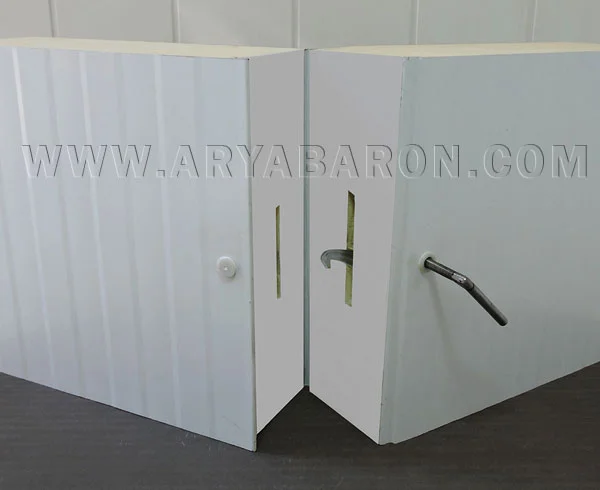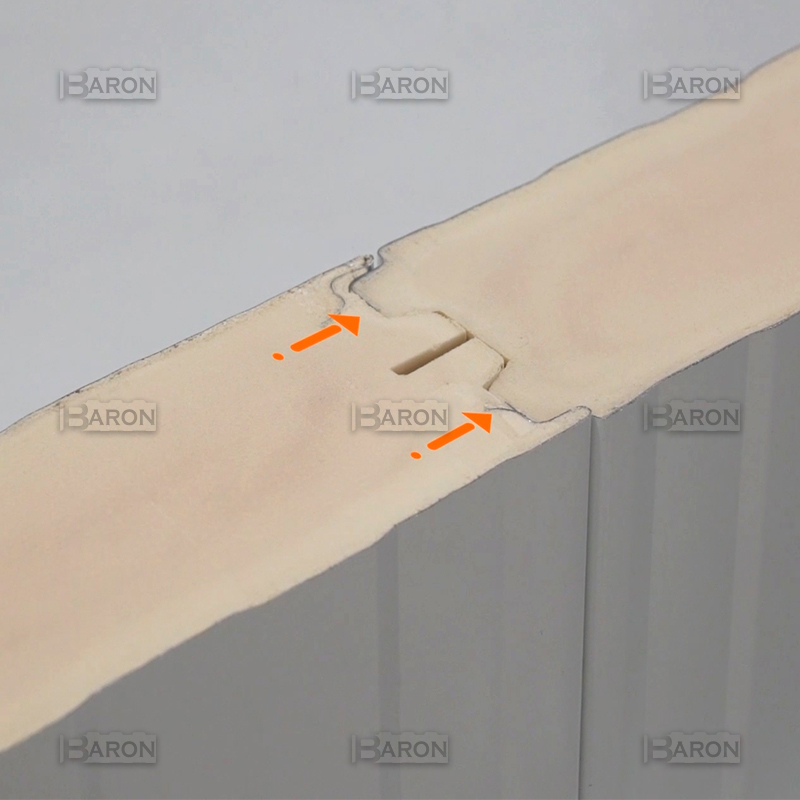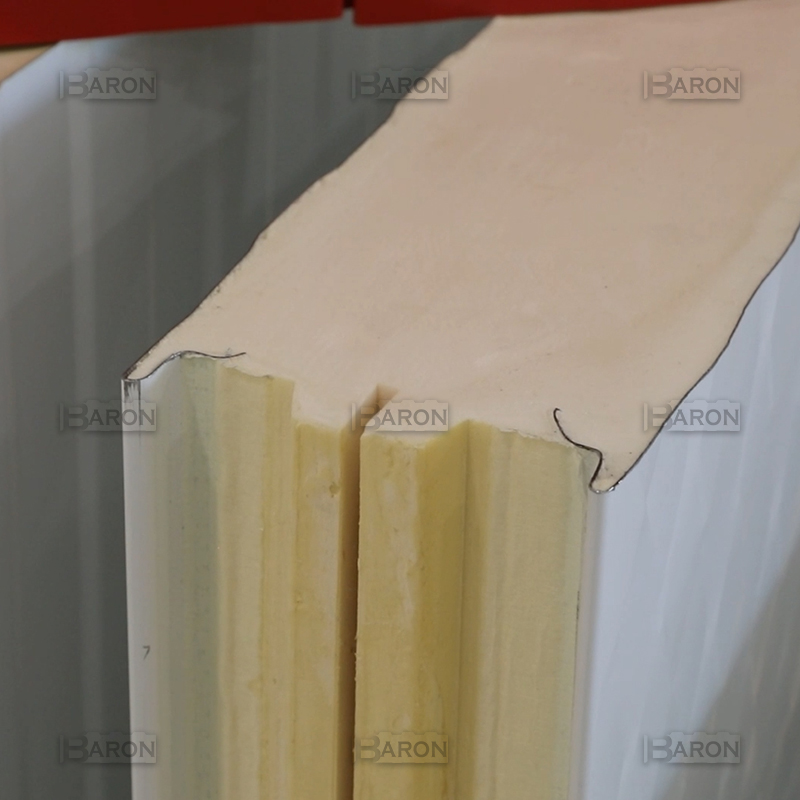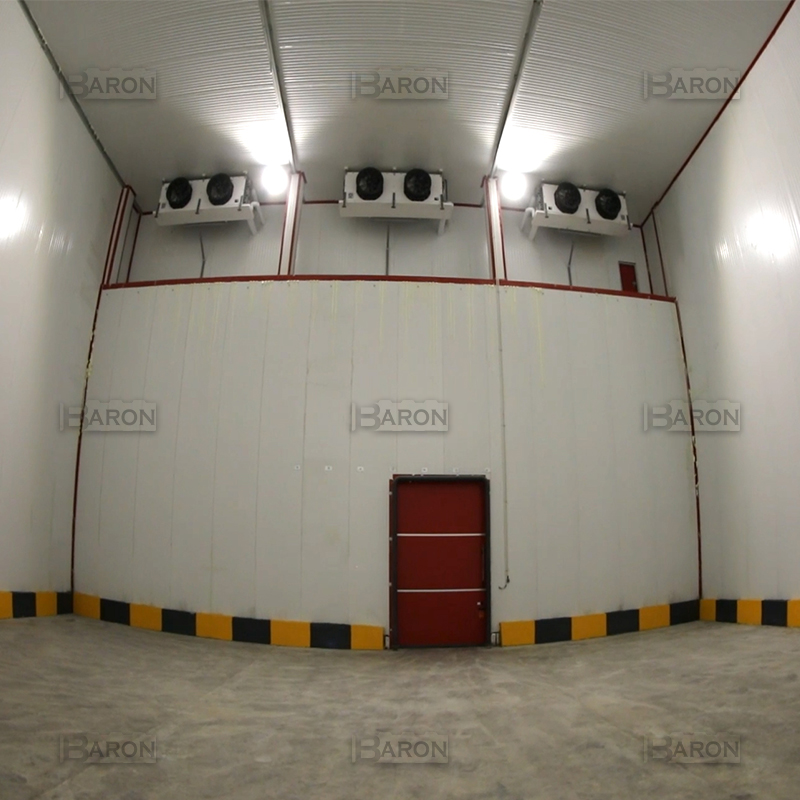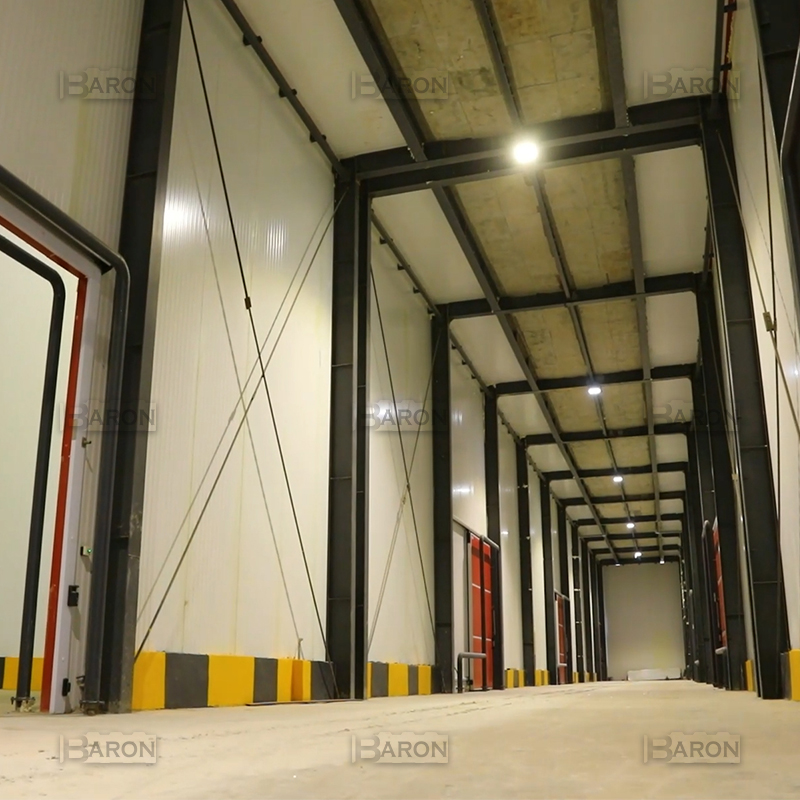What are the characteristics of coldroom sandwich panels?
Investigating the positive features of cold storage sandwich panels
Features of cold storage sandwich panel
In the past, different traditional materials were used to insulate the walls of coldrooms, but with the passage of time and industrial developments, with the help of sandwich panel walls and their insulation property, energy consumption in coldrooms can be prevented in a more efficient way. The most important features of coldroom sandwich panels are:
- Light weight and standard structure
- Thermal, acoustic and moisture insulator
- Earthquake resistant
- variety of designs and colors
- Ability to withstand high pressure and weight
- high durability
- Affordable
- Fire resistant
- High assembly speed
- The possibility of separation and installation in another place
- Easy to transport and install
- Resistant to moisture and decay
- hygienic and environment friendly
Coldroom sandwich panel structure
The best insulating foam for these sandwich panels is injected polyurethane foam with a density of 40 kg/m3. The polyurethane used to produce these sandwich panels is light, stable and has certain physical properties. The special design of these coldroom sandwich panels significantly reduces the electricity costs of the coldroom. The characteristics of the insulating layer of the coldroom sandwich panels are:
- Fire resistance class B1 or B2
- dlN4102 standard
- Density 40 kg/m³
These coldroom sandwich panels are designed to connect to each other in the form of a tenon and a double mortice. These rabbets lock in each other to create an integrated wall. Panel locks are used to ensure that the panels fit together perfectly so that there will be no seams. These locks are placed inside the sandwich panels as rabbets to lock together. The purpose of this system is to minimize the possibility of air passing and changing the coldroom temperature.
Aluzinc is often used to cover coldroom panels. Aluzinc is a steel that is coated with zinc and aluminum, and this combination has led to an increase in the resistance of Aluzinc. Therefore, to increase the strength and resistance of coldroom sandwich panels against environmental challenges, rust, corrosion, etc., Aluzinc steel is used as a coating of sandwich panels. PIR non-flammable polyurethane insulation foams are used in the structure of coldroom sandwich panels, and this is yet another significant advantage of these panels.
Lockable coldroom sandwich panel
In order to connect the panels to each other as well as possible and to ensure the durability of the connections in earthquakes, for the first time in Iran AryaBaron produced a cold storage sandwich panel equipped with locks in the Continuous line. The interlocking panels are easily airtight together and maintain a strong connection even during earthquakes.
AryaBaron also produces and markets lockable panels to connect the walls to the ceiling for better ventilation and fast installation.
What are the advantages of coldroom sandwich panels?
One of the most important advantages of these panels is resistance to moisture, heat and sound transmission. To build a cold storage or freezing tunnel in a building with traditional materials, a lot of time, money, energy and manpower is needed, while with the help of coldroom sandwich panels, it is easy to speed up the execution of a coldroom project. Among the other advantages of cold storage sandwich panels, the following can be mentioned:
- Coldroom sandwich panel does not lose its strength and resistance over time.
- They are highly resistant to natural disasters such as earthquakes or strong winds or accidents such as high pressure.
- The process of installing and running coldroom with the help of sandwich panels is easy and fast.
- They have the necessary standards for cold storages that store food or medicine.
- They are hygienic and washable.
-
One of the stages of insulating the roof and walls of a cold storage or freezing tunnel is the installation of sandwich panels, which is of great importance. If the installation process is not performed correctly and the necessary standards are not met, the project will suffer a lot of damage. Coldroom sandwich panels should be installed and properly sealed with flushes according to the procedures.
Therefore, although the cold room sandwich panel installation process is simple, it must be done by a skilled sandwich panel installer. AryaBaron factory has a long history and experience in the field of selling all kinds of roof, wall and coldroom sandwich panels. For more information and advice from our experts, you can contact us through the numbers listed on the site.
Fittings for sandwich panels
All kinds of sandwich panels have a simple installation process and these panels can be installed in a short period of time. Since the main purpose of using a coldroom panel is to prevent energy loss, special equipment and fittings are used during the installation of these panels to minimize the possibility of air passing through the walls of the coldroom.
- Corner joint and angle bar: they are installed at the intersection of two walls.
- T-joints: They are installed at the intersection of three walls.
- Low-lacquer joint: It is used to connect the plates next to each other.
Technical specifications of cold storage sandwich panel
Polyurethane foam is often used for the insulating layer of sandwich panels. The insulation layer of sandwich panels is generally made of polyurethane, rock wool, and polystyrene. But among all of them, polyurethane has stronger insulating properties. Since the main reason for using sandwich panels in coldrooms is to prevent energy loss, the best foam that can be used in their structure is polyurethane.
The suitable thickness of the insulation layer for coldroom sandwich panels is generally between 8 to 20 cm. The greater the thickness of this layer, the greater the sandwich panel’s ability to maintain the coldroom temperature. The material used in these sandwich panels is Aluzinc, galvanized and aluminum. The thickness of coldroom sandwich panel sheets is between 0.5 to 0.7 mm. The length of the sandwich panels varies from 2 to 13.60 meters according to the customer’s request
Application of coldroom sandwich panel
As one of the spaces in which the construction of coldroom sandwich panels is very popular, we can mention all kinds of coldrooms and frozen tunnels. The main application of these sandwich panels is sealing and insulating all kinds of cold storages. Coldroom sandwich panels are also used for building coldrooms in large buildings, warehouses, ice cream factories, industrial factories, etc. Other uses of these panels are:
- refrigeration units of stadiums and hotels
- Construction of freezing tunnels in buildings
- Refrigeration capability in marine and food industries
- laboratories, hospitals, medical equipment and flower and plant cultivation
- livestock farms
What is a coldroom sandwich panel?
coldroom Sandwich Panel is used to prevent the increase of energy consumption in coldrooms and cold storages. In very low temperatures of coldrooms, especially below zero coldrooms, energy consumption may become more than usual. To prevent this energy loss, the walls and roof of coldrooms are covered with a cover called coldroom sandwich panel. These sandwich panels with their unique features are produced for the country’s needs in the refrigeration industry and reducing energy consumption. The structure of coldroom sandwich panel is similar to roof sandwich panel and wall sandwich panel. The only difference is that the thickness of the sheets and the density of the insulation layer in these sandwich panels are more than other types of sandwich panels.
Coldroom sandwich panels include a core layer called insulation layer, which is covered on both sides by two metal layers. Coldroom sandwich panel manufacturers, including AryaBaron factory, are trying to make these panels in such a way as to prevent air from entering and leaving the cold storage. These panels are widely used for various coldrooms such as below zero, above zero coldrooms, industrial factories and generally in the refrigeration industry.


